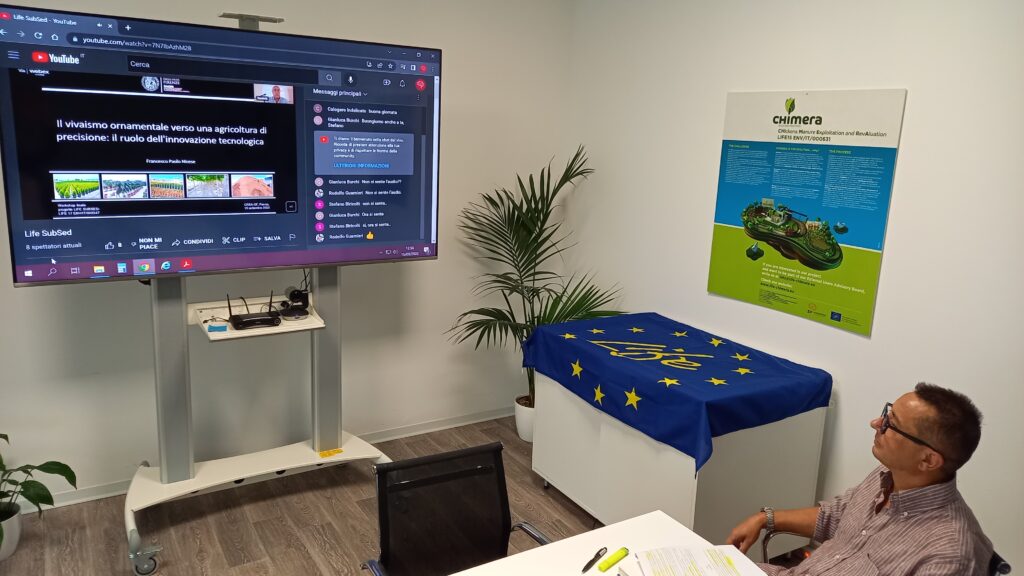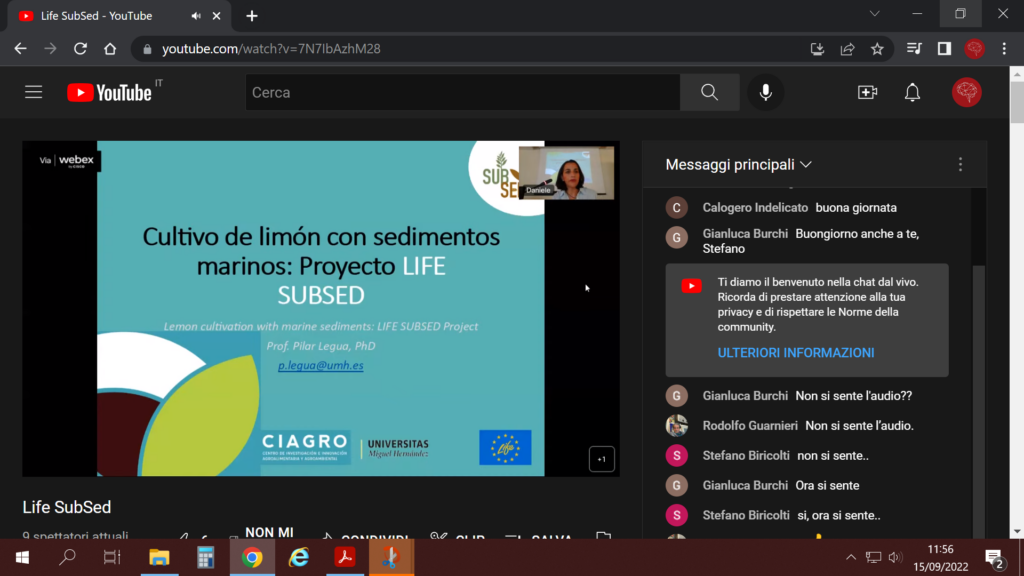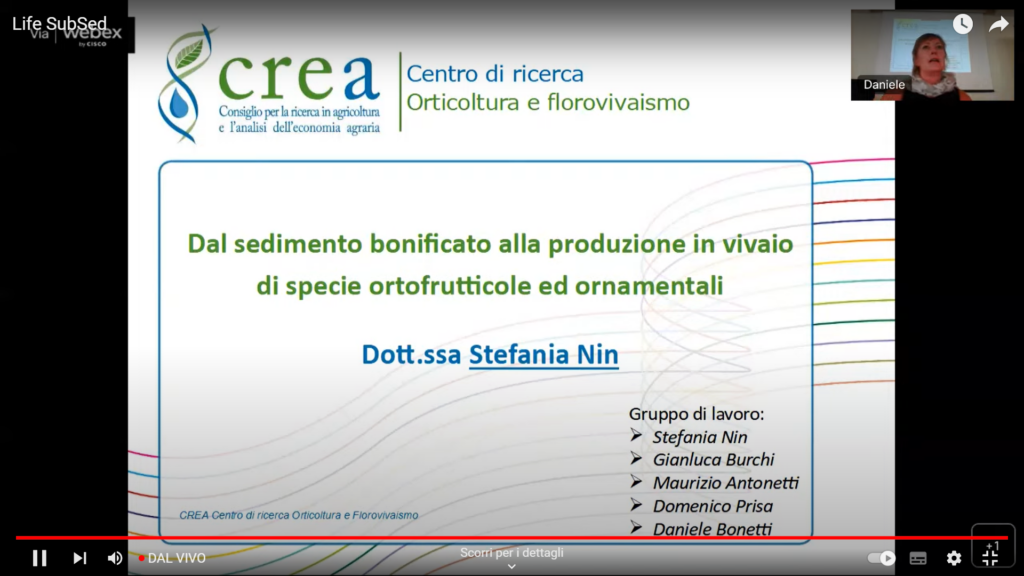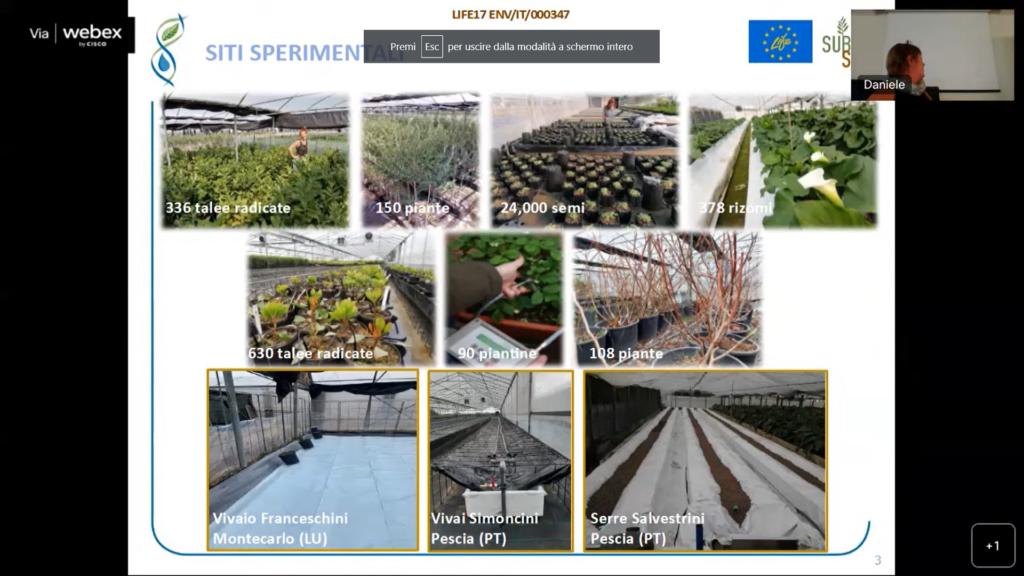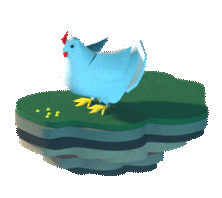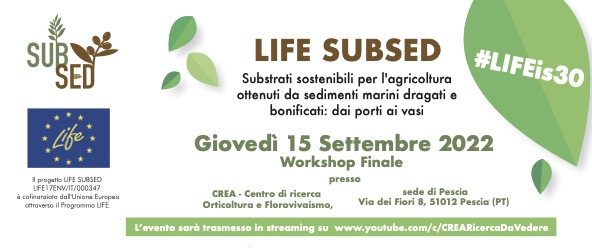The CHIMERA team participated in the Final Workshop of the LIFE SUBSED LIFE17ENV / IT / 000347 project which was held on September 15, 2022 in streaming. After the greetings of the Authorities, the LIFE project was introduced which, as in the philosophy of CHIMERA, aims to demonstrate that it is possible to convert a waste into a resource and in this specific case, the dredged marine sediment into a commercial substrate through the application of sustainable techniques, both from an environmental and an economic point of view. During the workshop, it was explained how to achieve this goal, sediment-based substrates have been used in Italian and Spanish nurseries in the nursery production of ornamental plants (laurel) and fruit trees (olive and citrus) and in the cultivation of non-food plants (protea, calla lily, laurel) and food plants (basil, blueberry, wild strawberry and citrus). During the final workshop, some sessions were also dedicated to the legal framework for sediment management and ornamental nurseries towards precision agriculture, deepening the role of technological innovation. Find out more
